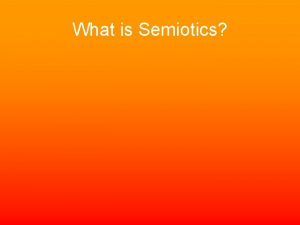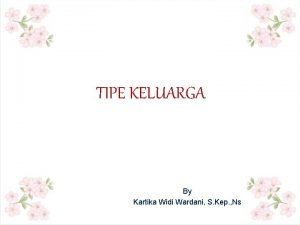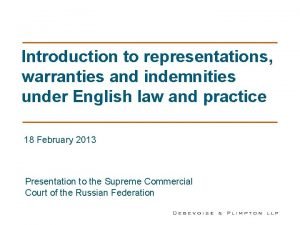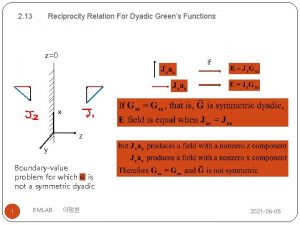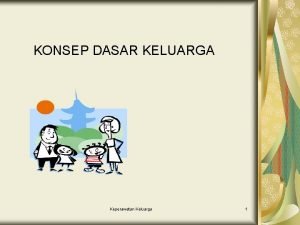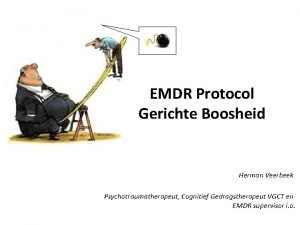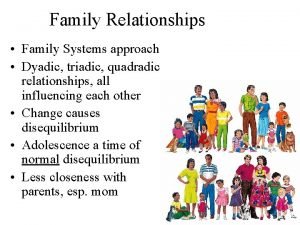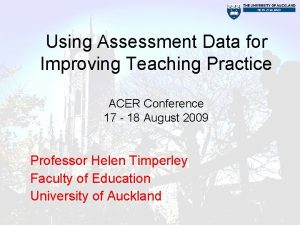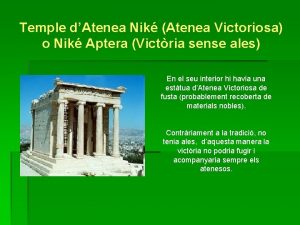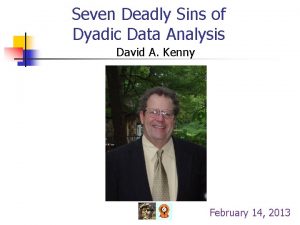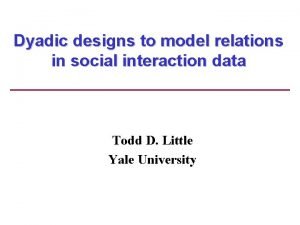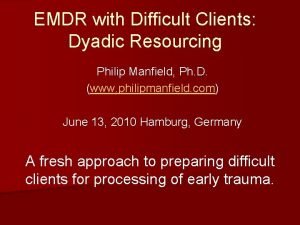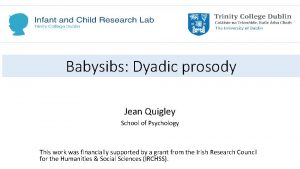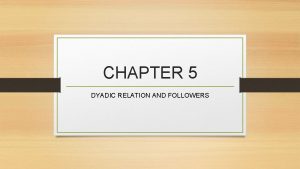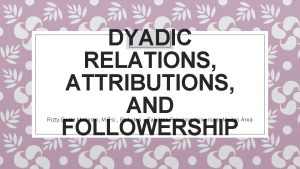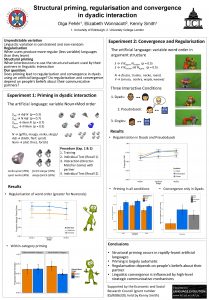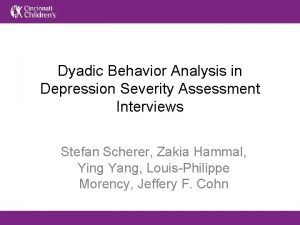Improving Response Prediction for Dyadic Data Nik Tuzov

















- Slides: 17

Improving Response Prediction for Dyadic Data Nik Tuzov April 2008 http: //www. stat. purdue. edu/~ntuzov/

Dyadic Data • Means that a certain “response value” is associated with a pair of objects Applications: • Social networks • Internet advertising • Recommendation systems

Unsupervised learning • Example: Collaborative filtering (Movie. Lens project) Movie User • • 1 2 3 4 5 1 A B C D A 2 A B C C A 3 A B C X? A 4 Y? B 5 Movie 1 is “similar” to 5, hence Y is likely “B” Users 1, 2, 3 are “similar” to each other, hence X is likely “C” or “D”

Co-clustering with Bregman differences • K*L rectangular clusters – direct products of row/column clusters

Co-clustering with Bregman differences (example from http: //videolectures. net/kdd 07_agarwal_pdlfm/)

PDLF-GLM Model (Agarwal & Merugu’ 07)

Neural Network as alternative to GLM

Algorithm

Data: Movie. Lens • 20603 ratings, 346 users, 966 movies • From 1 to 198 ratings per movie, 32 to 105 ratings per user. • 50 covariates for each (user, movie) pair • 5700 observations held out for validation • Using area under Receiver Operating Characteristic (ROC) curve to measure performance

Neural Network Topology

Number of nodes? • 40 nodes appear enough (produce similar overfitting)

Results Logistic regression Neural network PDLF-Logistic PDLF-Neural N/A 4 * 4 6 * 6 3 * 4 Hidden nodes 1 40 40 40 0. 62 0. 6742 0. 6913 0. 7128 0. 6919 0. 708 N/A 2022 1913 5184 1847 N/A 274 412 5 709 N/A 0. 25 0. 13 0. 23 0. 02 N/A -0. 4 -0. 57 -0. 36 -0. 62 Clusters Validation ROC Max. cluster size Min cluster size Max delta Min delta

New Covariates? Sample movies from the cluster with delta = -0. 57 : Title Release date Nosferatu (Nosferatu, eine Symphonie des Grauens) (1922) 1 -Jan-22 Blue Angel, The (Blaue Engel, Der) (1930) 1 -Jan-30 Pinocchio (1940) 1 -Jan-40 Dial M for Murder (1954) 1 -Jan-54 8 1/2 (1963) 1 -Jan-63 Carrie (1976) 1 -Jan-76 Top Gun (1986) 1 -Jan-86 Bram Stoker's Dracula (1992) 1 -Jan-92 Mortal Kombat: Annihilation (1997) 1 -Jan-97 Sphere (1998) 13 -Feb-98 • 756 ratings; 23 females and 55 males; No documentaries

Contribution to ROC

Is Neural Network useful? • Gain in ROC area depends on the order: extra linear features (n/network) are added first => gain from coclustering is reduced • The opposite is also true • Hence, info in linear features is similar to that in clusters, so • For this dataset, n/network is not so helpful, but… • For other dyadic datasets, n/network can be a lot more useful

Related Work • What if we want to predict response on (Web page, Search query, Web user) ? • B. Long, X. Wu, Z. Zhang, and P. S. Yu. Unsupervised learning on k-partite graphs. In KDD, 2006.

Additional Info • To obtain a detailed report and Matlab code, please visit my website: http: //www. stat. purdue. edu/~ntuzov/ • The project is posted in “Software skills / Matlab” section • Questions? Contact me on ntuzov@purdue. edu
 Saussure dyadic model
Saussure dyadic model Dyadic family
Dyadic family Warranty disclosure
Warranty disclosure Dyadic relation
Dyadic relation Users.nik.uni-obuda/kovacs.andras
Users.nik.uni-obuda/kovacs.andras Nik eusa
Nik eusa Scala das
Scala das Dyadic green's function
Dyadic green's function Konsep dasar keperawatan keluarga
Konsep dasar keperawatan keluarga Woede wrok wraak protocol
Woede wrok wraak protocol Organy kontroli legalności
Organy kontroli legalności [email protected].
[email protected]. Dyadic family
Dyadic family Using assessment data for improving teaching practice
Using assessment data for improving teaching practice Natural response and forced response
Natural response and forced response Natural and forced response
Natural and forced response A subsequent
A subsequent Formuö
Formuö
